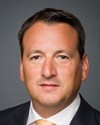Thank you, Mr. Chair, and thank you, Manny, for being here today.
First, I have to declare something here, Mr. Chair. On two previous occasions, I spoke at length with the witness and I've had difficulty sleeping afterwards because he's given me lots of food for thought. I'm not prepared to declare him hostile, but I'm tired again today because I've been thinking about these things. I should say to you, Manny, intellectually and practically, I'm not quite there yet, but I do appreciate that the trajectory of this discussion has been looking at what options are out there in an overarching way and what they would look like. There's obviously a context in which this arises.
Second is, in terms of implementation, to appreciate and understand that what is there now is not working. I think of the great Kenora riding. I think of Lake of the Woods. My colleagues get mushy here when I start talking about my own riding. We see tremendous value in one of Canada's most beautiful areas. We see some of the first nations communities developing land through federal programs for residential development. Magnificent places get built on these, and the real value of them ultimately isn't realized. So that doesn't work either. What does work?
We've seen 99-year leases, and as you say, the value plummets. Owners in a leasing context have nothing at the end of that, and the value of that land isn't benefiting anybody in the first nations community either. I've been involved with that legally. So I'm fixated on this issue and I'm so glad to be participating in this study and looking at those options. Yours specifically gives me concern along these lines.
I want to capture a little about the Nisga'a experience that you're well familiar with because in my mind, where I've struggled with this the most, is the fact that, particularly in the interior of B.C., these communities come forward, they've got choice land on Okanagan Lake, and everything is more perfect than it could ever be in Washagamis First Nation—although there is some potential there—or in some of the isolated first nations communities, for example, one of the 25 in my region, and we say, “That's kind of a perfect-world scenario. What's going to happen there?”
Can you tell us a little about that experience and how that process converted real value to a fairly remote section of British Columbia?






